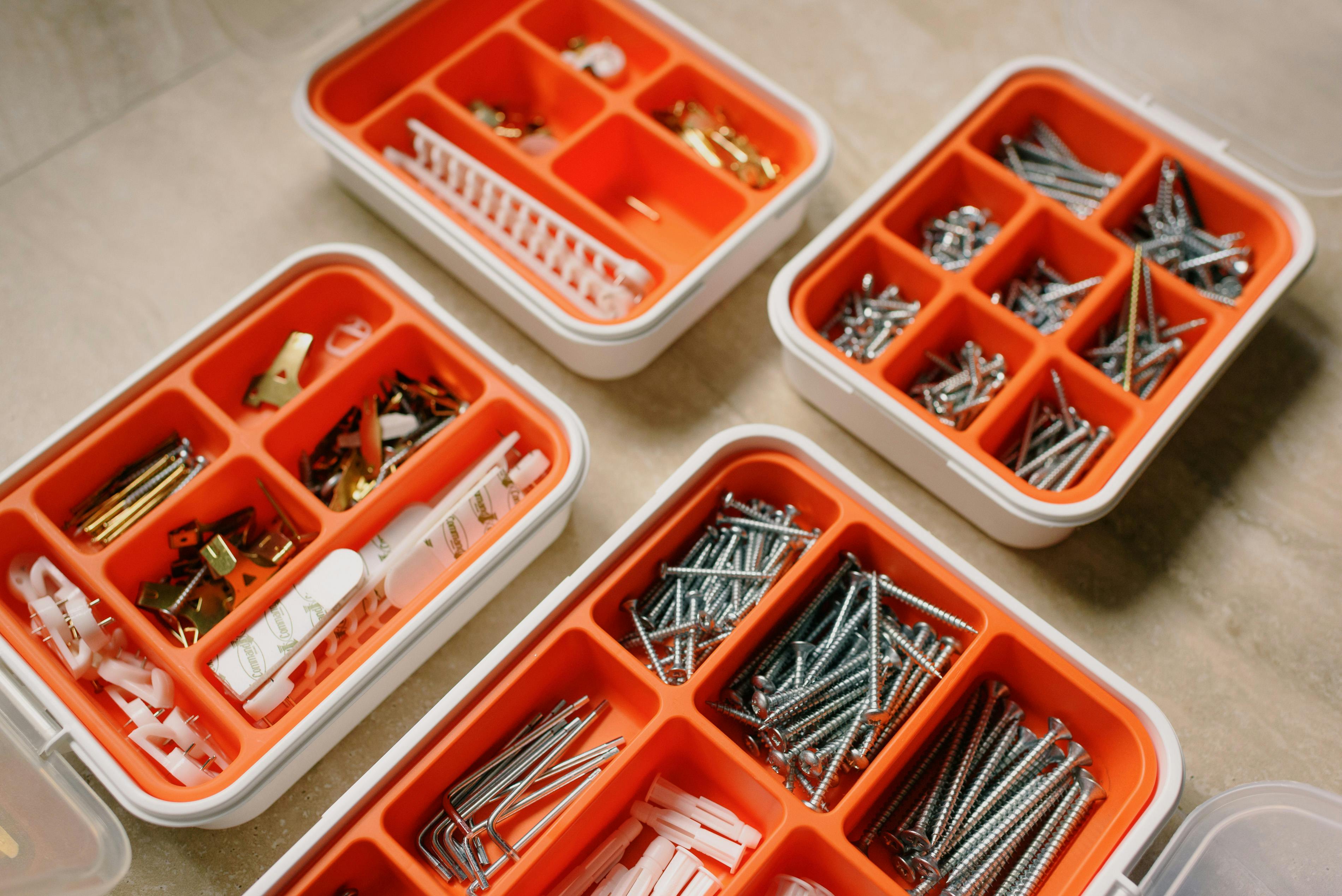Gaps in teeth can affect a person’s confidence and self-esteem. Fortunately, there are several ways to fix gaps in teeth. Depending on the severity of the gap, the treatment may range from simple at-home techniques to more involved dental procedures. This article will discuss how to fix gaps in teeth and provide an overview of the available treatment options.Gaps in teeth can be caused by a variety of factors. These include genetics, thumb-sucking or pacifier use during childhood, missing teeth, shifting teeth, or poor dental hygiene. In some cases, gaps between teeth can be treated with orthodontic treatment such as braces or other corrective dental devices.
How to Fix Gaps in Teeth Without Surgery
Gaps between teeth can be a source of embarrassment and low self-confidence, but you don’t need to go through surgery to fix them. There are several other ways to close the gaps and improve the appearance of your smile. From braces to veneers, there are many options available for closing gaps in teeth without surgery.
Braces are one of the most popular methods for closing gaps in teeth without surgery. After an initial consultation with your orthodontist, they will take an impression of your teeth and create a customized plan for you. Then, braces will be placed on your teeth that will gently push them together over time, closing the gap. Depending on the size of the gap and your individual needs, it may take several months or more than a year for braces to completely close the gap between your teeth.
Veneers are another option for fixing gaps in teeth without surgery. Veneers are thin pieces of porcelain that are bonded directly onto the front surfaces of your teeth. They can be used to correct misalignments, close gaps, hide discoloration, and more. Veneers are often used as an alternative to braces because they offer a quick and easy solution for closing gaps in teeth without having to undergo surgery or wear braces for months at a time.
If you have minor gaps between your front teeth that don’t require orthodontic treatment, you could also consider bonding or contouring as ways to fix them without surgery. Bonding is when a tooth-colored composite resin material is applied directly onto your tooth enamel and then shaped into place in order to fill in any gaps or chips in your tooth enamel. Contouring is when a small portion of enamel is removed from around the edges of each tooth using a special dental tool, resulting in a more even smile line with no visible gap between the teeth.
Overall, there are many options available when it comes to fixing gaps between teeth without having to undergo surgery or wear braces for an extended period of time. The best option for you will depend on the size and location of the gap as well as any other dental issues that may need correction such as misalignment or discoloration. Talk with your dentist about all these options before making any decisions so that you can get back your confidence-boosting smile!
How to Fix Gaps in Teeth With Surgery
Gaps in teeth can be caused by a number of reasons, including genetics, injury, or the natural aging process. Whatever the cause, these gaps can lead to an uneven smile and can also make it harder to properly care for your teeth. If you’re looking for a more permanent solution to your gap teeth, surgery may be an option.
Surgery can be used to close gaps between teeth and give you a more even smile. Depending on the size of the gap, there are several different types of surgery that may be recommended. For smaller gaps, your dentist may suggest bonding or porcelain veneers. Bonding involves using tooth-colored composite resin to fill in the spaces between your teeth and restore their natural shape and appearance. Veneers are thin pieces of porcelain that are bonded directly onto the front surface of your teeth to give them an even look.
For medium-sized gaps, dental crowns may be recommended. A dental crown is a tooth-shaped cap that is placed over an existing tooth in order to cover any imperfections or damage. Crowns can also be used to close larger gaps between teeth and give them a more uniform appearance.
For larger gaps between teeth, orthodontic treatment such as braces or Invisalign may be recommended. These treatments involve wearing a series of aligners over time in order to gradually move your teeth into their desired positions. Orthodontic treatment typically takes several months or even years to complete, but it can help create a beautiful smile with minimal invasiveness and recovery time compared to other surgical treatments.
Finally, for severe cases where orthodontic treatment isn’t effective enough on its own, oral surgeons may suggest bone grafting as a way to fix large gaps between teeth. Bone grafts involve taking bone from another area of your body (such as your hip or jawbone) and then implanting it into the area where the gap exists in order to create new bone growth and fill in the space between your teeth. This type of surgery is typically done under general anesthesia so you won’t feel any pain during the procedure itself.
No matter what type of surgery you choose for closing gaps in your teeth, it’s important that you work closely with your dentist or oral surgeon throughout the entire process so they can ensure that you get the results you want without any complications along the way. With proper care and maintenance after surgery, you should be able to enjoy a beautiful new smile for years to come!
Pros & Cons of Surgeries for Gaps in Teeth
Surgeries for gaps in teeth can be a great way to improve the appearance of your smile and fill in any unsightly spaces. If you’re considering this type of procedure, it’s important to weigh the pros and cons before making a decision. Here are some of the advantages and disadvantages associated with surgeries for gaps in teeth.
Pros
One of the main advantages of undergoing surgery to fill in gaps in teeth is that it can help improve the overall look and feel of your smile. The procedure can also help improve your ability to chew food efficiently, as well as reduce any discomfort caused by an uneven bite. Additionally, surgery can help address any potential problems caused by misaligned or overlapping teeth.
Cons
Although there are many benefits associated with undergoing surgery to fill gaps in teeth, there are also some potential drawbacks. Surgery is an invasive procedure that requires a certain amount of recovery time, so it’s important to plan ahead if you think you may need additional downtime after the procedure. Additionally, surgery can be costly depending on the extent of work required and may not be covered by insurance. It’s important to speak with your dentist about all potential costs before making a decision.
Overall, surgeries for gaps in teeth can be an effective way to improve your smile and address any potential dental issues. It’s important to weigh all the pros and cons before making a decision so that you can make an informed choice about what’s best for your specific situation.
Home Remedies for Gaps In Teeth
Gaps between teeth can be a cause of embarrassment and social anxiety for many people. However, the good news is that there are a variety of home remedies available to help reduce the gaps in teeth and improve your overall smile. Some of these remedies include using dental floss, natural oils, and even lifestyle changes.
Dental floss is an effective way to reduce gaps in teeth as it helps to remove plaque buildup and food particles which can cause spaces between teeth. Flossing should be done daily, preferably after each meal, to help keep your teeth clean and healthy. Additionally, it is important to use a gentle flossing technique in order to avoid damaging the gums or enamel of your teeth.
Natural oils such as coconut oil, sesame oil, or olive oil can also be used to reduce gaps in teeth. These oils have antiseptic properties which can help kill bacteria that can cause cavities and other dental issues. Simply swish a tablespoon of the oil around your mouth for about 10 minutes before spitting it out. This process should be repeated at least once every day for best results.
Making certain lifestyle changes can also help reduce gaps in teeth. Avoiding sugary foods and drinks is important as sugar promotes bacterial growth which can lead to tooth decay and other dental issues. Additionally, quitting smoking is another great way to improve oral health as tobacco products contain chemicals which can damage tooth enamel and increase the risk of gum disease.
Finally, visiting your dentist regularly is essential for maintaining good oral health and reducing gaps in teeth. During these appointments, your dentist will be able to examine your mouth for any potential problems as well as provide advice on how best to care for your teeth at home. If you are looking for more intensive treatment options such as braces or veneers, they will also be able to provide further information on these options too.
Overall, there are many home remedies available to help reduce gaps in teeth and improve your overall smile. With proper dental hygiene habits and lifestyle changes combined with regular visits to the dentist, you should be able to achieve a healthier mouth with straighter looking teeth in no time!

Orthodontic Treatments for Gaps in Teeth
Gaps between teeth can be caused by a variety of factors, including genetics, thumb sucking, and poor oral hygiene. While gaps can give a unique look to your smile, they can also cause health issues. Orthodontic treatments are available to close the gaps and improve your oral health.
Braces are the most common option when it comes to closing gaps between teeth. Traditional braces use metal brackets that are attached to the teeth and connected with a wire. This wire is then adjusted periodically to move the teeth into their proper positions. Invisalign® is another popular option for closing gaps between teeth. Invisalign uses a series of clear aligners that fit snugly over the teeth and gently move them into their proper positions over time.
Other orthodontic treatments that can help close gaps include dental bonding and veneers. Dental bonding is a process in which composite resin material is applied directly to the surface of the tooth and hardened with a special light. This process can be used to fill in small gaps or reshape certain areas of the tooth. Veneers are thin porcelain shells that are placed over the front surface of the tooth and provide a natural-looking solution for closing larger gaps between teeth.
No matter what type of treatment you choose, it’s important to discuss all your options with an experienced orthodontist before making any decisions about your treatment plan. Your orthodontist will be able to advise you on which treatment will best suit your needs and help you achieve your desired results.
Costs of Treatments for Gaps in Teeth
Gaps in teeth can be caused by several factors, including genetics, oral trauma, and gum disease. Treatment for gaps in teeth can vary depending on the severity of the gap and the desired outcome. The cost of treatment can also vary significantly depending on what type of treatment is chosen. In general, treatments for gaps in teeth range from simple bonding to orthodontic treatments such as braces or Invisalign.
Bonding is a common treatment option for minor gaps between teeth. Bonding involves using a composite resin material to fill in the gap between two teeth. It is usually a quick procedure that does not require any extra preparation work or follow-up visits after the initial procedure. The cost of this procedure typically ranges from $300-$500 per tooth depending on the size and shape of the gap.
For larger gaps, orthodontic treatments may be necessary to close them. Orthodontic treatments such as braces or Invisalign are often used to close larger gaps between teeth and help realign the entire bite. These treatments can take anywhere from six months to two years depending on the complexity of the case and require regular visits to an orthodontist for adjustments and check-ups throughout the process. The cost of these treatments can range from $3,000-$7,000 depending on how long they take and which type of treatment is chosen.
In some cases, surgery may be necessary to close larger gaps between teeth or repair damaged teeth due to trauma or gum disease. Surgery can involve anything from dental implants to bone grafts and may require multiple visits over time in order for it to be successful. The cost of these procedures will depend on what type of surgery is needed and how extensive it is but can range anywhere from $5,000-$25,000 depending on the severity of the case.
Overall, there are several different treatment options available when it comes to closing gaps in teeth that vary greatly in terms of cost and complexity. It’s important to talk with your dentist or orthodontist about all your options before making a decision so you can find a solution that works best for you both financially and aesthetically.
Dental Implants for Closing Gaps In Teeth
Dental implants are an effective and long-term solution for those with gaps in their teeth. They are a reliable and natural-looking way to fill the gaps between teeth, making them look whole and complete again. Dental implants are surgically inserted into the jawbone, where they act as anchors for new replacement teeth. The implant acts as a replacement root, which allows for a permanent restoration that looks and functions just like natural teeth.
The process of getting dental implants is relatively simple. First, the dentist must take a full dental exam to ensure that the patient is a good candidate for dental implants. After the evaluation is complete, the dentist will take X-rays and impressions of the patient’s mouth to determine where the implant should be placed. Once this is done, anesthesia is administered and the implant is surgically placed into the jawbone. Then, over time, it fuses with bone tissue to create a secure foundation for new replacement teeth.
Once the dental implant has healed and integrated with bone tissue, it can be used to support one or more false teeth or bridges. This can be done in multiple ways including fixed bridges or overdentures that snap into place around existing natural teeth or implants. The dentist will then customize the restoration to fit perfectly within your mouth so that it looks and feels like your own natural teeth.
The benefit of having dental implants as opposed to other options such as dentures or bridges is that they provide a long-lasting solution that won’t require replacements over time like other methods may require. Additionally, because they are secured directly into your jawbone, they can help prevent bone loss in areas where there are missing teeth or large gaps in between them due to decay or injury.
Overall, dental implants offer many advantages when it comes to closing gaps in your teeth and restoring your smile back to its original beauty and function. If you have any questions about whether you may be a good candidate for dental implants, make sure to talk with your dentist today!

Conclusion
Gaps in your teeth are a common problem, but one that can be addressed with both traditional and modern treatments. Traditional treatments such as braces and bonding can help to close gaps in your teeth, while newer options such as veneers or dental implants may be more effective for larger gaps. It is important to speak to your dentist or orthodontist about the best option for your individual needs.
When considering any treatment for gaps in your teeth, it is important to remember that the health of your gums and teeth should always come first. Regular dental care, including brushing and flossing daily, should be a part of any treatment plan. Finally, it is important to remember that no matter what treatment you choose, you should always follow up with regular visits to the dentist to ensure that your smile remains healthy and beautiful for years to come.
At the end of the day, how you fix gaps in your teeth will depend on many factors such as size and location of the gap, severity of the issue, and personal preference. With so many options available today, there is sure to be something out there that can help you achieve a flawless smile.

